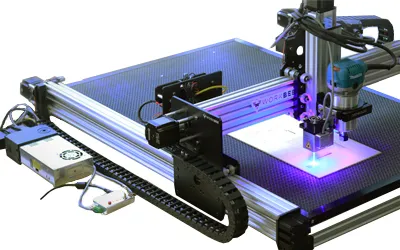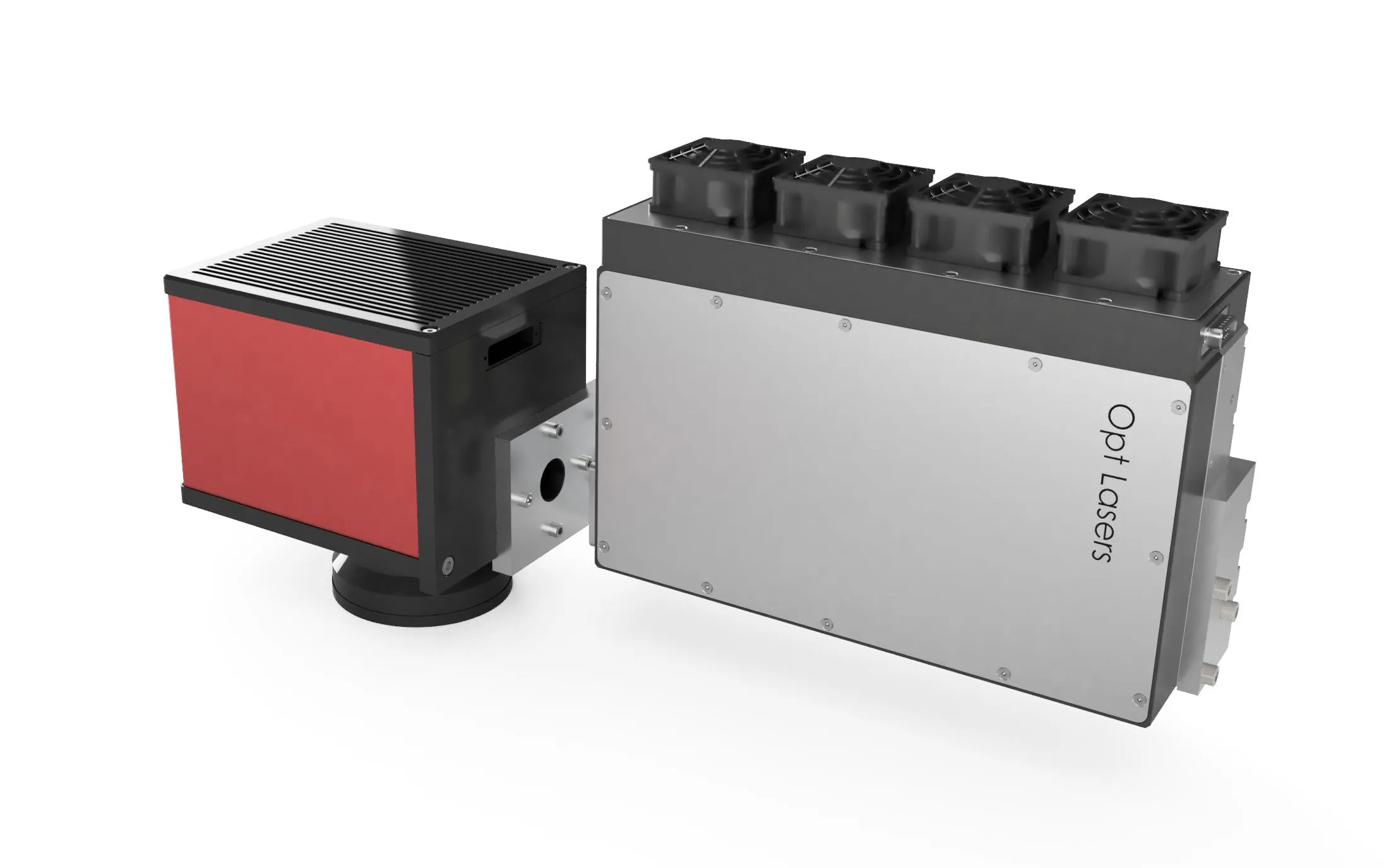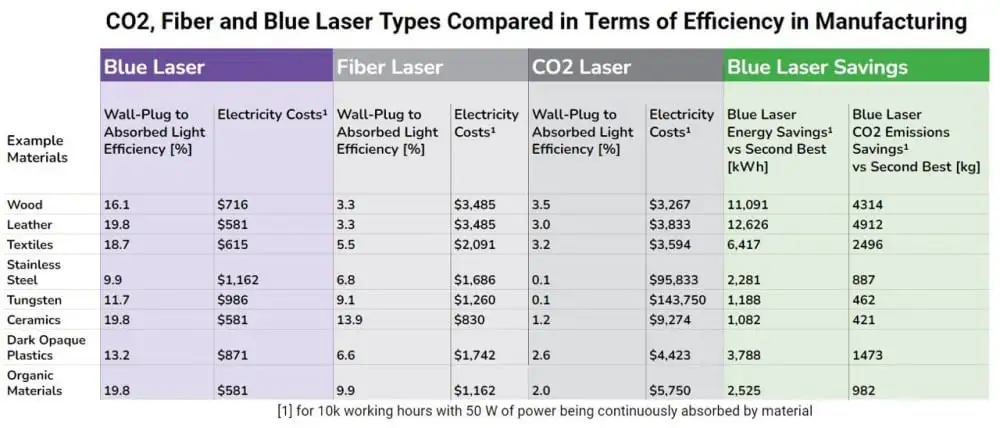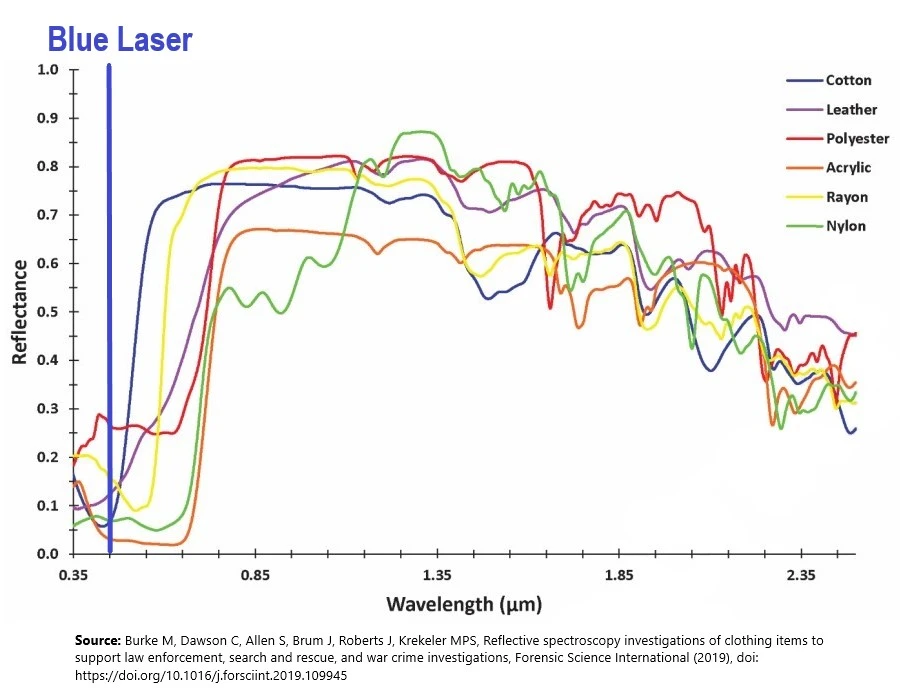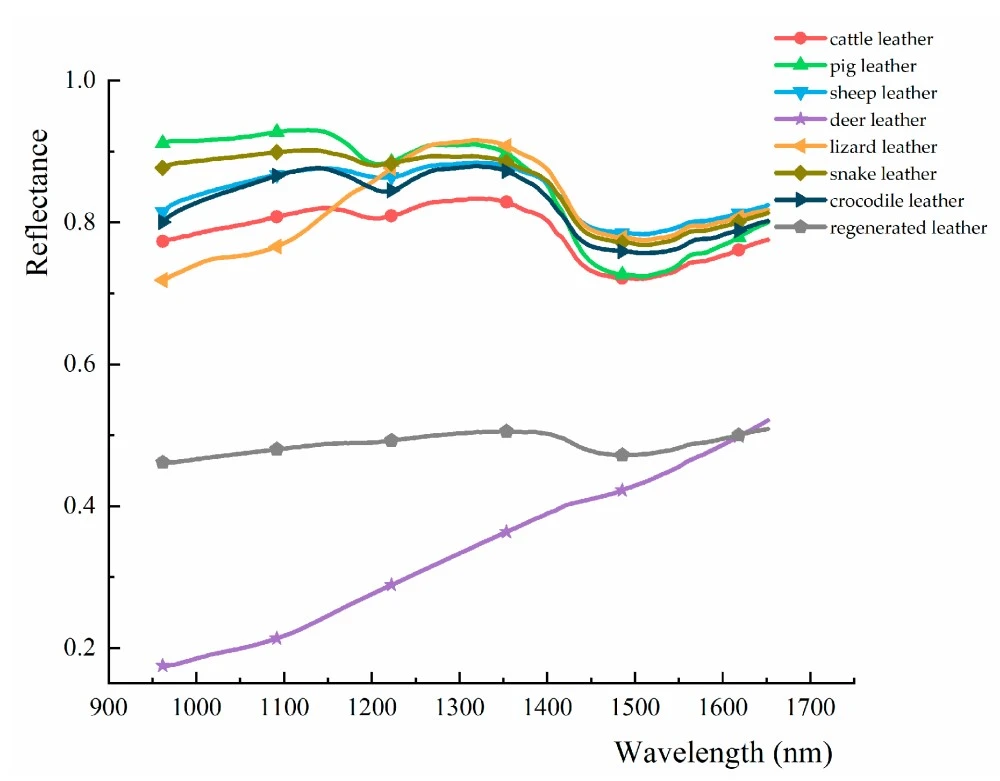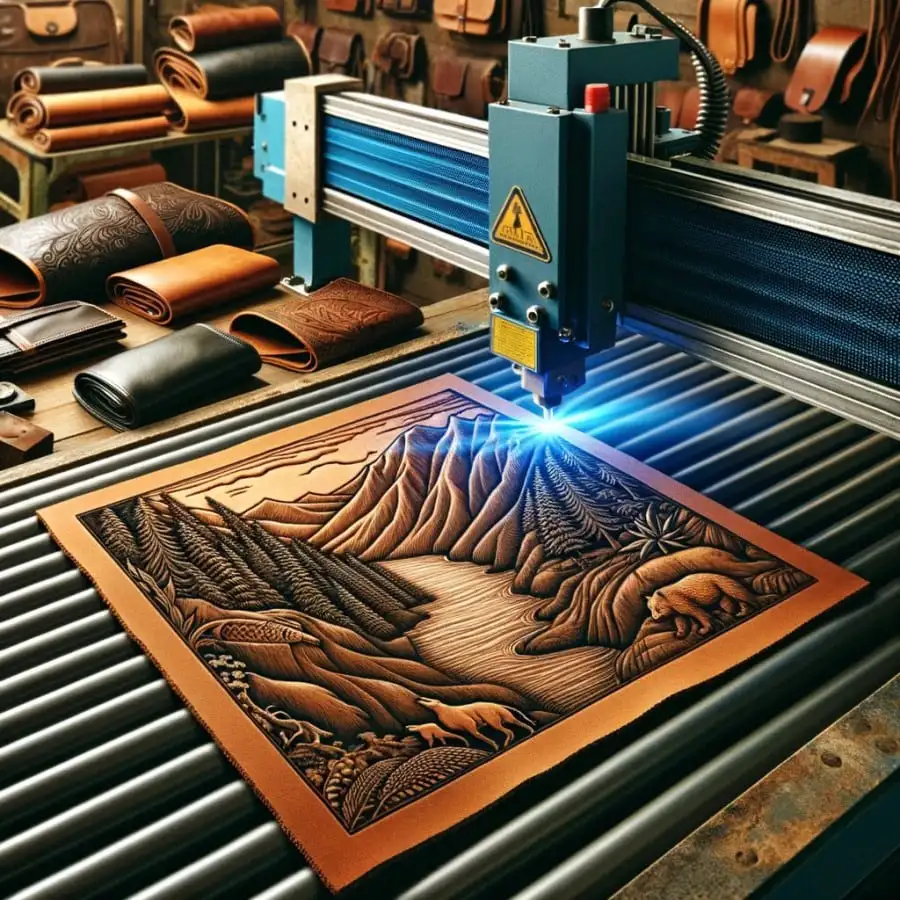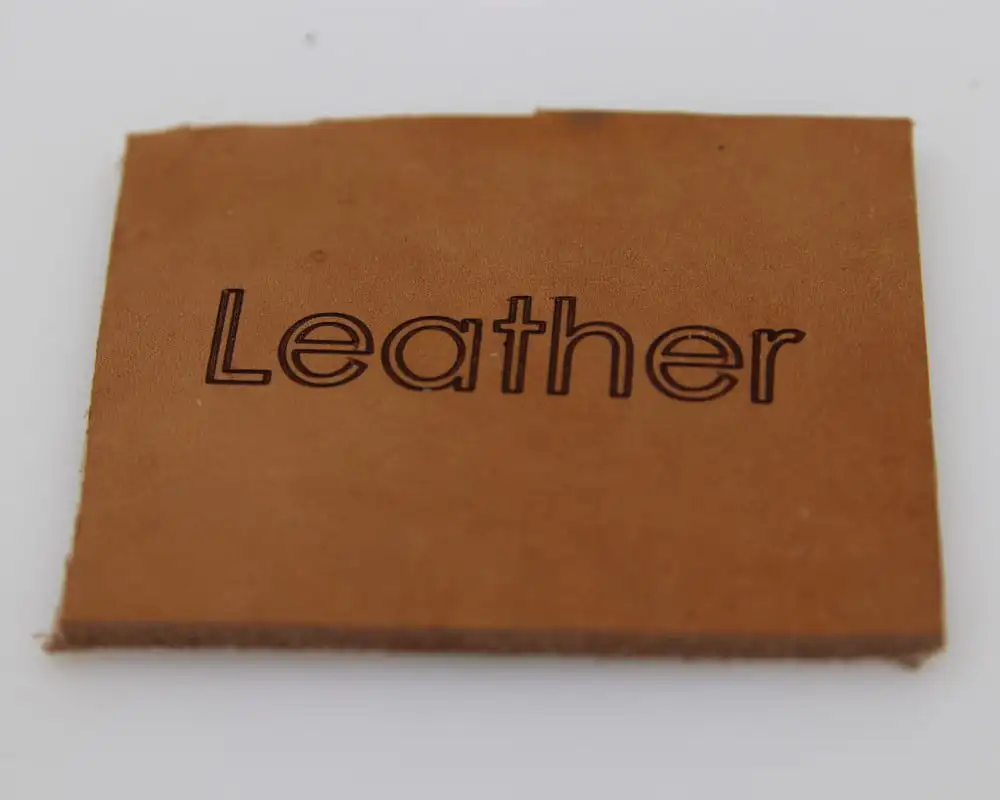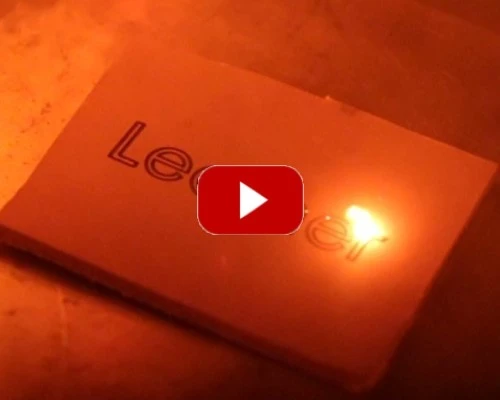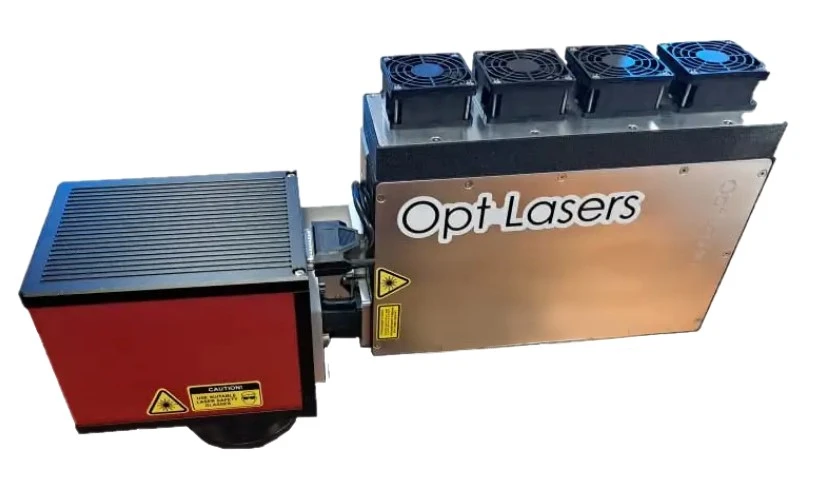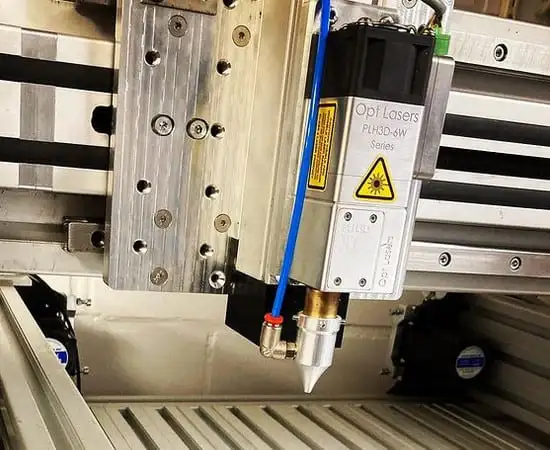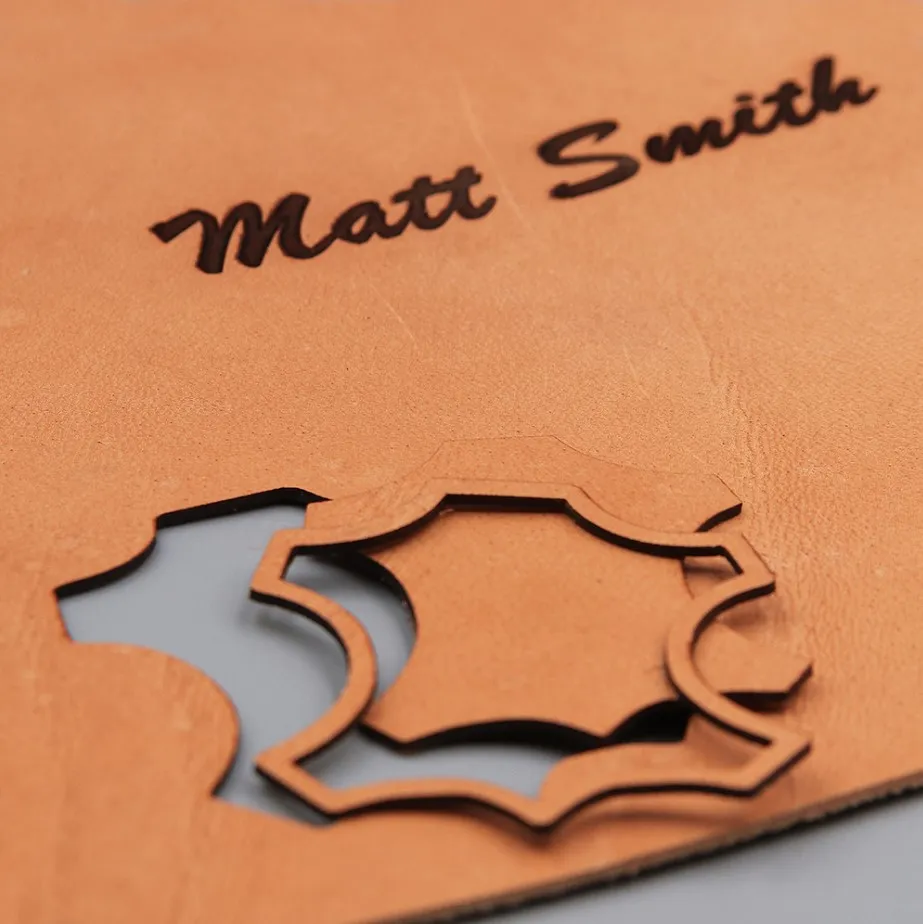Choosing the Best Laser Engraver for Leather: A Comprehensive Guide
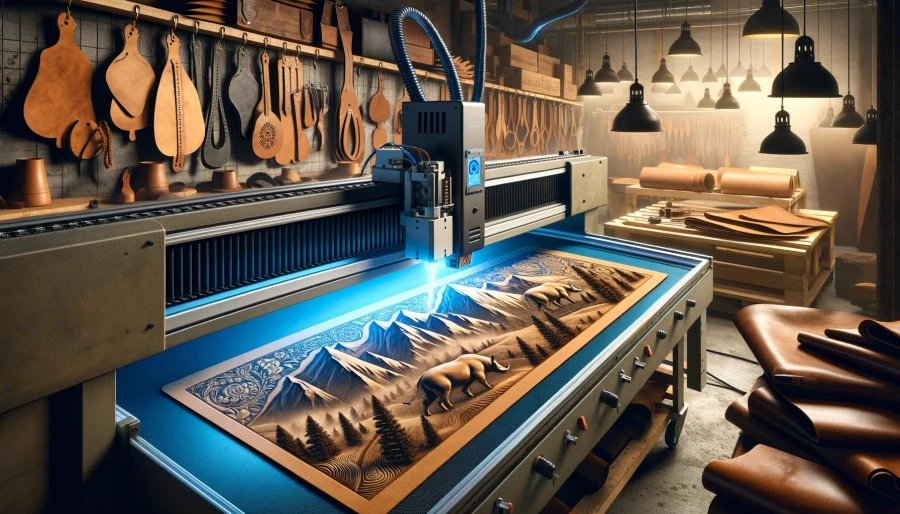
Selecting the best laser engraver for leather involves understanding the nuances of laser types, leather properties, and the engraving process. Leather crafting is an art that combines tradition with technology, especially when it comes to engraving. The introduction of laser engravers has revolutionized leather processing, offering precision, speed, and versatility. In this guide, we'll talk about the best laser engravers for leather, focusing on different types of lasers, leather properties, and practical considerations to help you make an informed decision.
Explore the precision of Opt Lasers' Blue Lasers for Leather Engraving
Understanding Laser Types
The efficiency of a laser engraver for leather depends significantly on the type of laser used. There are several types of lasers that can be used for this purpose, each with its unique properties and suitability for leather engraving.
Blue Lasers
Blue lasers are known for their high efficiency in leather engraving. Leather absorbs blue laser beams more efficiently (by approximately 10-20%) compared to other laser types. This higher absorption rate is due to the presence of collagen and melanin in leather, which are particularly receptive to blue light. Blue lasers are also energy-efficient, consuming considerably less power than CO2 lasers, making them environmentally friendly and cost-effective. Blue laser systems for engraving leather use 4-5 times less electricity than the typical CO2 lasers. As a result, a blue laser engraver for leather is not only 6 times more efficient but also reduces energy expenses by a factor of 6. Interestingly, water is transparent to a blue laser engraver for leather, which means blue lasers are much safer for the leather's water content, effectively not needing a leather conditioner to be applied after the engraving is done. In addition, blue lasers are also more compact and require minimal maintenance. The graph below shows the light reflection curves for different materials including leather, for a wavelength range between 350 nm and 2500 nm. As depicted in the graph, leather reflects only 12% of blue laser leather engraver's light beam. Since leather is not transparent to blue light, this means that blue laser's absorption on leather is 88%.
CO2 Lasers
CO2 lasers are widely used in various materials, including leather. However, they are significantly less efficient for leather engraving compared to blue lasers. Despite their very good absorption on leather, which is lower than blue laser's absorption, CO2 lasers waste 94-95% of the supplied electrical energy required to run a CO2 laser engraver. Furthermore, the interaction of CO2 lasers with leather can lead to thermal degradation, affecting durability. Engraving leather with CO2 lasers also requires applying a leather conditioner to help restore the moisture lost in the leather engraving process. This is because, unlike blue lasers, CO2 lasers are highly absorbed by water, effectively making it evaporate during the process. Nevertheless, with proper settings, CO2 lasers can still produce satisfactory results. In addition, CO2 lasers require sophisticated and frequent maintenance.
Fiber Lasers
Fiber lasers, while excellent for other materials, are not ideal for leather engraving. They have a much lower absorption rate by leather, with the exception of deer leather and regenerated leather. This makes them less suitable for engraving commonly commercially used leather types despite their very good electrical efficiency of 25-30%. For instance, over 90% of the commonly-used 1.064 µm wavelength fiber laser beam is reflected and effectively wasted while engraving pigskin leather. For cowhide leather, the 1.064 µm fiber laser wastes approximately 80% of the incident laser beam's power.
Leather Properties and Engraving
The Essence of Leather in Laser Engraving
Leather, a timeless and versatile material, is prized for its durability and aesthetic appeal. The choice of the best laser engraver for leather hinges on understanding leather's unique characteristics. Different animals yield various leather types, each with distinct properties that affect engraving outcomes. The primary types include:
- Full-Grain Leather: As the highest quality, full-grain leather retains the complete texture and markings of the animal hide. Ideal for premium products, this type of leather responds well to laser engraving, especially with a blue laser engraver, which produces rich and detailed designs.
- Top Grain Leather: A step below full grain, top grain leather is refined to remove imperfections. It's more pliable than full grain, making it a versatile choice for various applications. It is often used for high-end products requiring a balance of quality and workability. Blue lasers can engrave this type of leather exceptionally well.
- Suede Leather: Suede is a type of leather made from the underside of the animal skin, giving it a soft, napped texture. It's less durable than full-grain leather but valued for its unique texture and softness. Suede is popular in fashion items like jackets, shoes, and bags. While suede's soft, napped texture presents unique engraving challenges, it produces highly elegant and distinct results with a laser leather engraver. If engraved with a CO2 laser, special care is needed to maintain the texture and quality of suede post-engraving. Blue lasers however are much more suitable for engraving this type of leather with minimal to none post-care required.
- Corrected Grain Leather: Commonly known as genuine leather, this type is further processed for a uniform appearance. The term "genuine leather" does not merely indicate that product is made of real leather. It primarily signifies its grade, which is often misunderstood as high quality. However, in the hierarchy of leather quality, genuine leather ranks lower than full-grain, top-grain and suede leather. Contrary to common perception, genuine leather products, being made from leftovers of higher-end leather goods, lack the durability and aesthetic appeal of higher-quality leather. These products, including women's purses, men's wallets, shoes, belts, and handbags, are more affordable and widely available due to their lower cost. While it lacks the distinct character of higher grades, it is still a popular choice for laser engraving.
- Bonded Leather: Made from leftover scraps, bonded leather is the most economical. Its lower durability and distinct properties require careful consideration when selecting the best laser engraver for leather of this type.
- Artificial Leather: Also known as synthetic leather or faux leather, this material is manufactured to mimic the look and feel of real leather. It's made from a variety of synthetic materials and often treated to replicate leather's texture. Artificial leather is animal-friendly, generally more affordable, and used in a wide range of products, but it may not offer the same durability or natural aging as genuine leather. Ideal for laser engraving, artificial leather provides a consistent surface that can be precisely etched without the variability found in natural hides. It's a versatile choice for laser engraving projects where uniformity and cost-effectiveness are priorities. However, it might not offer the same depth and richness in engraving that natural leathers do.
Each leather type responds differently to laser engraving, impacting the end result's appearance and durability.
Factors Influencing Engraving Quality
Several factors contribute to the quality of laser engraving on leather: leather type responds differently to laser engraving, impacting the end result's appearance and durability.
- Leather Color and Texture: The color and texture of leather greatly influence the visibility and contrast of the engraving. Lighter leathers typically offer more contrast, making engravings stand out more distinctly. For blue lasers, darker leathers even more readily absorb blue laser beams. However, for CO2 lasers, darker leathers require precise and careful power settings balancing to ensure visibility without burning the material. Blue lasers will however perform worse for white-coloured and blue-coloured leather, since these colors reflect blue laser light.
- Leather Thickness and Density: The thickness and density of the leather affect the laser's penetration, especially if you want to perform relief leather engraving. This is primarily important for CO2 laser leather engraver for which thicker and denser leathers might require higher power settings or multiple passes for clear engraving. Blue laser engravers for leather do not suffer from these issues and can be used for engraving different thicknesses and densities of leather with minimal or no changes to the settings.
- Tanning Process: The tanning process, which turns animal hide into leather, also plays a role. Chrome-tanned leather, for example, responds differently to laser engraving compared to vegetable-tanned leather. The chemicals used in tanning can affect how the leather absorbs the laser beam.
- Finish and Coating: Some leathers have protective coatings or finishes that can affect the engraving process. These coatings might need different laser settings or techniques to achieve the desired effect.
Engraving Techniques and Considerations
- Test Engraving: Always conduct a test laser engraving on a smaller spare piece of the leather that you want to engrave. This allows you to adjust settings for the best result without risking damage to the entire piece.
- Power and Speed Settings of the Laser Engraver for Leather: Finding the right balance between laser power and speed is crucial. Too much power might potentially burn the leather, while too little can result in faint engravings. For Opt Lasers' laser engravers and laser engraving systems, the speed of the laser does not affect the clarity of the engraving. This is due to the fact that all our galvo laser systems and laser heads are equipped with high-speed drivers. It will however affect the engraving's depth.
- Residue and Cleaning: Engraving can leave a residue on the leather, especially if CO2 lasers are used. Even if you use a blue laser leather engraver, it's important to have a cleaning method that doesn't damage the leather but effectively removes any residue just in case it happens.
- Design Considerations: The complexity of the design and the leather's natural grain and imperfections can affect the leather engraving process. Simple, bold designs often work better on textured leathers, while more intricate designs might be suitable for smoother, finer-grained leathers.
Post-Engraving Care
After laser engravingis concluded, leather may require additional care to maintain its quality:
- Conditioning: Applying a leather conditioner can help restore moisture lost during the engraving process, especially for CO2 lasers. With a blue laser engraver for leather, you don't need to use a conditioner.
- Protection: Consider applying a protective finish to safeguard the engraved area from wear and tear, especially for items that will be handled frequently.
- Aging and Patina: Engraving can leave a residue on the leather, especially if CO2 lasers are used. Even if you use a blue laser leather engraver, it's important to have a cleaning method that doesn't damage the leather but effectively removes any residue just in case it happens.
- Design Considerations: Be aware that engraved areas might age or develop a patina differently than the rest of the leather. This can add to the aesthetic appeal but should be considered in the design phase.
In summary, the choice of laser engraver for leather should be informed by an understanding of different leather types and their properties, as well as the specific engraving requirements of each leather type. Mastery of these nuances enables the creation of exquisite laser engraved leather products that stand the test of time.
Choosing the Right Laser Engraver
When selecting a laser engraver for leather, consider the following factors:
Intended Use
The purpose of the leather product should guide your choice of laser engraver. For smaller-volume or personal projects like bookmarks or keychains, a smaller CNC router, such as Openbuilds C-Beam CNC machine, with XT-50 laser head is entirely sufficient. However, for mass-production or higher-volume commercial products, a more robust and versatile leather engraving machine is recommended such as Opt Lasers' GLE-50-B or GLE-30B blue galvo laser engraving system. The video on the right-hand side below shows full-grain leather being engraved with the GLE-50-B blue galvo laser.
Laser Power and Speed
The power and speed settings of the laser engraver are crucial. Different types of leather require varying power settings and engraving speeds. For instance, thicker leathers like cowhide need slightly higher power settings compared to thinner leathers like lambskin. This effect is however much more pronounced in CO2 lasers than blue laser engravers for leather.
Project Size
The size of your engraving project also dictates the type of laser engraver needed. For large-scale projects, you can require a customized Galvo laser system. Alternatively, for larger projects you can also utilize larger CNC router, such as for example OpenBuilds LEAD CNC, and a PLH3D-30W laser head. Overall, for larger laser leather engraving projects, a machine with a large working area and higher power settings is preferable.
Budget and Efficiency
Your budget and the efficiency of the machine are also important considerations. Blue lasers, while efficient, might be slightly more expensive upfront, depending on your system choice, but offer long-term savings in energy and maintenance costs. CO2 lasers, on the other hand, might be slightly less expensive upfront, although their energy and maintenance costs quickly make them the less economically sound decision.
How Much Does a Decent Laser Engraver for Leather Cost?
Depending on your budget, a decent laser engraver for leather costs a few thousand USD, counting the whole system required. However, if you already have a CNC router, and just need a decent complimentary engraving laser head, Opt Lasers offers complete laser add-on kits for CNC machines, with price ranging from $949 for Ultra-HD precision XT-50 laser kits to $2499 for industrial-grade PLH3D-30W laser kits.
Galvo Laser Engravers
Blue galvo laser engravers for leather, such as the Opt Lasers' GLE-30-B and GLE-50-B standalone laser systems, are at the forefront of leather engraving technology. These dedicated systems are designed to deliver rapid operation while maintaining the detail and precision of intricate designs. The best laser engraver for leather, ie. the Opt Lasers' GLE-30-B galvo laser systems can offer a focused laser spot as small as 0.13 µm, while the GLE-50-B model can offer the same laser spot but with twice as high optical (laser) power density. We highly recommend reaching out to us, since the best approach to getting the best leather engraving galvo laser is telling us what exactly you need to achieve. We will then meticulously calculate what technical specification you need to achieve your goals, and provide you with a personalized price quote.
The key advantage of these laser systems is their swift and precise engraving capabilities, ensuring efficient completion of tasks without sacrificing detail accuracy. With the GLE-30-B galvo laser system, leather engraving can be achieved almost instantaneously, although the speed varies based on the leather type and specific input settings. Custom blue galvo laser engraver for leather can attain even greater speeds, reaching up to 79 inches per second (2 meters per second).
Optimized for efficiency, these galvo lasers facilitate a smooth and effective engraving experience. This establishes them as the preferred option for professionals and manufacturers seeking speed and precision in leatherworking. Opt Lasers also offers the flexibility of supplying just the galvo laser modules or a selection of specific components, catering to manufacturers who wish to incorporate these systems into their existing production lines. For your convenience, a table detailing our range of galvo laser products is provided below:
Learn More About Our Blue Galvo Laser Solutions
| GLE-15-V | GLE-30-V | GLE-5-B | GLE-30-B | GLE-50-B | GLE-100-B | |
| Center Wavelength | 405 nm | 450 nm | ||||
| Optical Power | 15 W | 30 W | 5 W | 30 W | 50 W | 100 W |
| Working Distance | 180 mm or 350 mm or 650 mm | |||||
| Working Area | 100 x 100 mm or 200 x 200 mm or 300 x 300 mm | |||||
| Minimum Spot Size1 | 180 um | 180 um | 220 um | 130 um | 130 um | 1000 um |
| Operation Speed 2 | up to 2000 mm/s | |||||
| Laser's Electro-to-Optical Efficiency | 26 % | 24 % | 28 % | 27 % | 24 % | 30 % |
| Power Consumption | 150 W | 200 W | 50 W | 200 W | 300 W | 600 W |
1- values provided for 6.69" [170 mm] working distance
2- for angles +/- 10 degrees
Best CNC Laser Engraver Add-on Kits for Leather Engraving
For those looking for a lower entry-cost option, combining blue laser heads with CNC routers offers a versatile laser engraver for leather solution. Engraving laser heads such as the XT-50, PLH3D-15W, and PLH3D-30W are industrial-quality equipment, meaning they last 20-200 times longer than other laser heads as well as Made-in-China blue laser machines. Our laser kits are specially designed for compatibility with various CNC machines from well-known brands including OpenBuilds, ShopSabre, Shapeoko, and X-Carve.
This integration allows users to seamlessly switch between detailed laser engraving and broader cutting tasks, offering the dual benefits of a laser's precision and a CNC router's versatility in a unified system.
This fusion of technologies brings a blend of versatility and efficiency to the table. For example, a craftsman can intricately engrave a leather piece and then easily switch the setup for cutting the leather into a desired shape or pattern. This flexible, modular approach contrasts with the single-purpose nature of specialized engravers, offering artisans and industries the option to select equipment that aligns with their specific project needs. Additionally, this configuration is particularly advantageous for those who need to cut thick leather, typically over 1.4 mm, alongside their leather engraving tasks.
Practical Applications
Laser engraving on leather opens up a myriad of applications. From fashion accessories to promotional products, the demand for personalized leather items is continually growing. Businesses can leverage laser engraving technology to produce unique, high-quality leather products that appeal to a wide range of customers. In the field of leather craftsmanship, utilizing the best laser engraver for leather is key to exploring a wide array of practical applications. With the precision and efficiency of the best laser engraver for leather, manufacturers and artisans can intricately customize leather goods, ranging from personalized wallets and belts to luxurious automotive interiors and bespoke furniture. This technology automates the creation of elaborate designs and patterns on leather, which were once time-consuming and challenging to achieve by hand. These engravers are not just tools - they are gateways to innovation that makes your products sell much better.
In addition, industries such as automotive and aviation utilize these engravers for producing high-quality, customized leather components that meet stringent quality standards.
Moreover, the best laser engraver for leather has significant implications in the realms of fashion design and accessory creation. Fashion designers leverage these machines to create unique, trend-setting pieces, adding intricate details and personalized touches to leather apparel and accessories. In the commercial sector, businesses utilize these engravers for branding purposes, etching logos and designs onto promotional leather items, enhancing their market appeal and brand recognition.
In more specialized fields, such as prototyping and product development, the best laser engraver for leather offers precision and repeatability, essential for creating accurate models and prototypes. This is particularly beneficial in industries where customization and detail are paramount, such as in luxury goods manufacturing.
Conclusion
What makes the best laser engraver for leather depends on various factors including the type of leather, intended use, and budget. Blue lasers stand out for their efficiency and eco-friendliness across all leather types, although CO2 lasers are more effective for engraving blue-colored and white-coloured artificial leather. By understanding these aspects, you can choose the best laser engraver for leather that meets your specific needs and enhances the value of your leather products.

